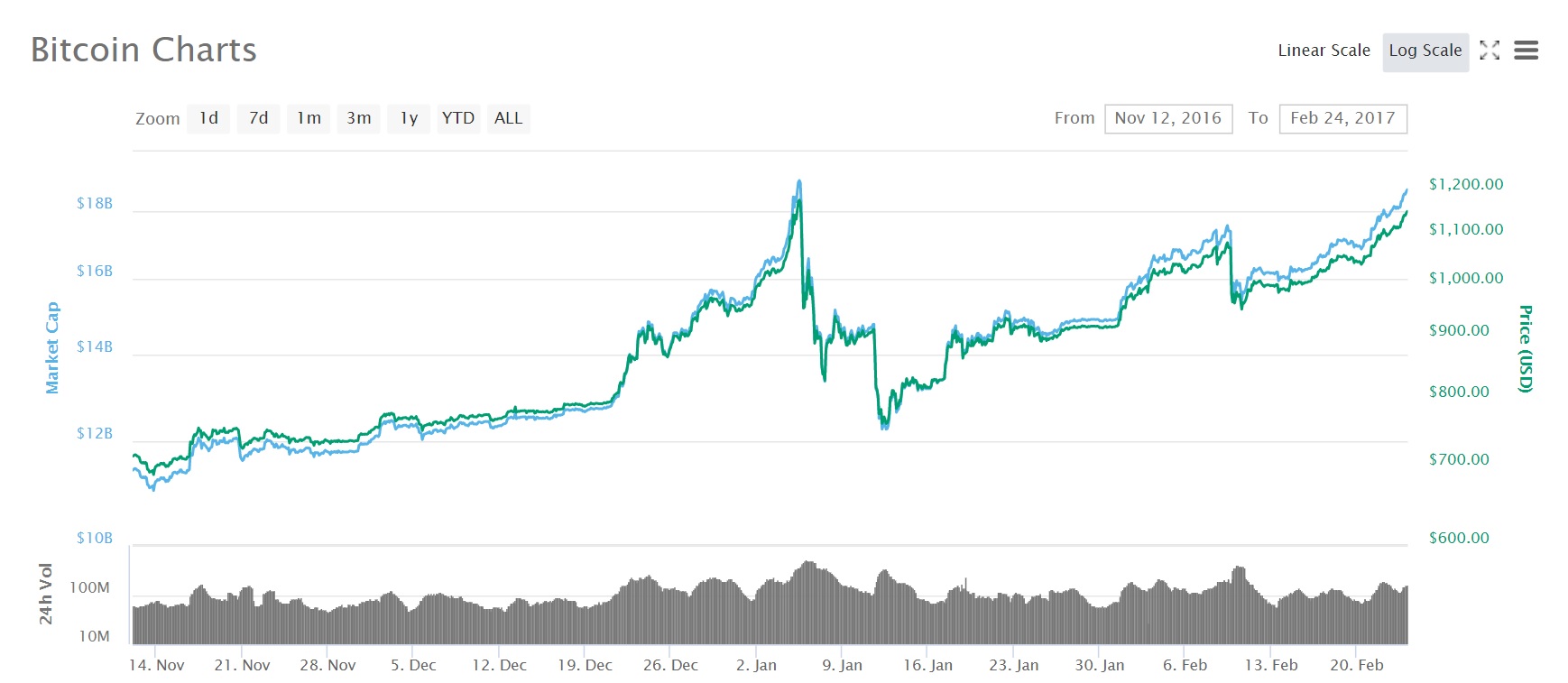One would think that after all the good news about institutional investment that has been coming in, the crypto market would have done anything but sink.
That’s not been the case, however. The crypto market sunk below the dreaded $6,000 mark, then ran past the $5,500-5,600 level, and now languishes at the $3,800 mark, at the time of writing.
This is the worst drop since September 2017, a time when there was a lot more regulatory uncertainty and less development in the industry.
Bitcoin has lost roughly $46 billion, and the market as a whole about $90 billion. Some analysts, as much as one can analyze this unpredictable market, believe that the levels of September 2017 (BTC price of $3,000) could be a real possibility.
This roller-coaster ride is nothing out of the ordinary for the seasoned HODLers, but this particular one is interesting for several reasons.
Firstly, this occurs at a time when a flood of good news has been hitting the market.
Almost everyone has been looking forward to the launch of institutional investment services like Bakkt. A Bitcoin ETP has also been listed on Switzerland’s top stock exchange, SIX. The market is known to react wildly to both positive and negative news, and this drop in the face of positive news stands out.
Secondly, the cryptocurrency market has a tendency to surge towards the end of the year — yet we haven’t seen any signals to assure this. While both 2016 and 2017 exhibited this trend, it does not seem to be the case this year.

Then, of course, is the hard fork of Bitcoin Cash (BCH) into Bitcoin Cash ABC and Bitcoin Cash SV (Bitcoin Satoshi’s Vision). The extent to which this split influenced the market is unknowable, but one feels that there is some kind of correlation.
Before we draw any conclusions, if at all, let’s take a look at what exactly the market has gone through in the past month.
The Bitcoin Cash Hard Fork AKA “Crypto Civil War”
The most shocking event of the the month is, of course, the hard fork that Bitcoin Cash has undergone.
Now with two variants, Bitcoin Cash ABC and Bitcoin Cash SV, the contentious debate about how Bitcoin Cash should proceed into the future has led to a divorce — with severe repercussions for the market.
Brian Kelly, founder and CEO of investment group BKMC, called this a “crypto civil war,” which is about as accurate a description as any.
There are rumors that BCH holders have sold their bitcoins and diverted those funds to their respective forks. The resultant hash war has certainly, if not in any measurable way, caused both reputational and financial damage to the cryptocurrency market, nudging an already stagnant market to the wrong side of support levels.
Such incidents only further the impression that the cryptocurrency market is too volatile and uncontrollable to last into the future, but it should be known that the Bitcoin Cash fiasco is an outlier, and the coin has already been marked as an investment to avoid by the larger community.
With the market still maturing, such incidents are inevitable. However, in the grand scheme of things, it is but a blip in the development of a revolutionary asset class.
The SEC Cracks Down on ICOs
The United States Securities and Exchange Commission (SEC) recently announced that it had settled charges against 2 initial coin offerings, Airfox and Paragon. The 2 ICOs were ordered to hand money back to their investors, pay a $250,000 fine and register as securities.
A press release stated:
These are the Commission’s first cases imposing civil penalties solely for ICO securities offering registration violations… Neither Airfox nor Paragon registered their ICOs pursuant to the federal securities laws, nor did they qualify for an exemption to the registration requirements.
The SEC, while not particularly hostile towards the market, has not shown much favor towards it either.
As opposed to countries like Switzerland and Japan, the United States has been largely indecisive on how to treat digital assets and ICOs.
From the regulator’s point of view, the fact that that a hard fork like that of Bitcoin Cash can create severe losses for investors is alarming, and investor protection is something that the SEC has stated is a priority in forming a cryptocurrency regulatory framework.
Though a hard fork is not a failure in and of itself, it does have a history of being accompanied by a price drop. The Bitcoin Cash hard fork is a particularly egregious example of a hard fork.
The settlement charges against the 2 ICOs are significant in that the SEC has gone public with it, which gives some idea about how the body views ICOs — largely as securities offerings, it appears. If the SEC does view most ICOs this way, then these offerings would come under the purview of all related laws.
Some may say that this stifles innovation and that digital assets must be treated distinctly. Others view this as positive insofar as it provides some certainty regarding the asset class.
Prediction is Nigh Impossible

The truth is that we won’t really ever know what caused the market to tank.
It’s difficult to analyze the market when whales can sell en-masse for profit and influence skittish newbie investors who are also in it just for the money. There’s no irrefutable way to tell if whales are indeed influencing the market by selling at opportune moments and, what’s more, the market’s generally panicky reactions to any sell orders makes it an easy exploit.
It says something about the immaturity of the market if the Bitcoin Cash crisis alone is responsible for what has happened.
In all likelihood, what is occurring is a result of a long existing illness of the market: irrational participants prone to dramatic outbursts at the first sight of news, good or bad.
Unlike the earlier crashes, where there were fewer variables involved, the market is now acts on by what appears to be “unknown unknowns.” Random forces of irrationality and fear-mongering are then exacerbated by events like SEC rulings and hard forks.
Except, unlike other markets, the crypto market reacts far more wildly.
Is the Market Being Cleared of “Tourists”?
If there’s one thing that market crashes — around 6 of which have occurred since Bitcoin’s inception — have taught us, it’s this: there are chiefly 2 kinds of investors in this asset class, the HODLers and those just trying to cash in on the craze.
The HOLDers are clear on their intentions — they will HODL until the market matures which is something that nearly everyone, including institutional investors, agrees will happen at some point.
It is the second group that will have a greater impact in the short term. At the time of writing, the market continues to slide below the $4,000 mark and if it keeps up, $3,000 levels are not out of the question.
All is not dark for the market.
At this point, having undergone so many “crashes,” the idea of Bitcoin and cryptocurrency fading into the night is laughable.
If anything, the recent dip after the manic highs of 2017 teaches an important lesson to would-be investors: the market is very new and difficult to comprehend.
Investors should never invest more than they can afford to lose. Even apportioning 10% towards digital assets can bring great returns in the long run, so investors would do well to forego risking large sums to make short-term gains.
Today’s prices provide a more affordable entry point for potential investors who have been sitting on the fence.
If the tourists have indeed left, and those bruised investors who have lost money have learned their lesson, the market now has an opportunity for more stable and predictable growth through serious investments that are positioned for the long term.
The crypto market should not be considered a cash-grab market that can make you a millionaire overnight. It’s a genuine market that must be taken seriously, and casual investing only harms both the investor and the market.
What factors do you think contributed to this recent market crash? Let us know your thoughts in the comments below.

